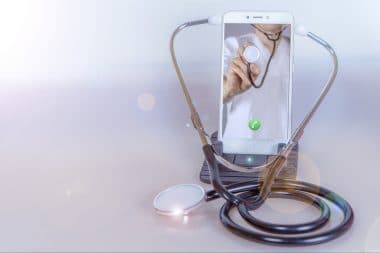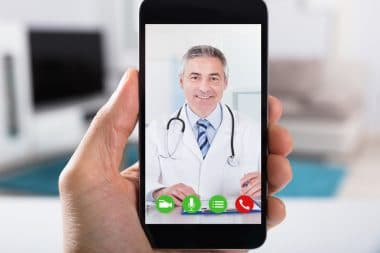According to the American Teledentistry Association, teledentistry describes the use of imaging, electrical information, and communication technologies such as interactive audio-video and data communications to provide support for dental care delivery, consultation diagnosis treatment, and education.
Teledentistry encompasses virtual dental visits and high-tech assessment of patients which has the benefit of providing inexpensive care options for patients which are also more convenient. It indicates a more widespread, evolving landscape of healthcare that is shifting toward modernization, assimilation, and more accessible care. In recent times, it’s become normal for consumers to buy contacts, prepare taxes and conduct banking online. Teledentistry is an indication that the dental industry is adopting change, as well.
We consulted Braintree dentist Dr. Shames who shared some of the features of teledentistry and how it is changing the face of healthcare.
With technology, teledentistry produces the possibility for stakeholders in the dental field to collaborate and interact remotely along every step of a patient’s dental health journey.
How Teledentistry Works
Even though physical dental examinations and procedures can’t be performed via virtual pathways, many of the services can. For instance, interviews are the most common form of virtual health appointments.
Teledentistry achieves this in two main ways: Through live video chat software with a dental practitioner or the store-and-forward method where the patient uploads media such as pictures and videos about his condition. The latter method requires a dental assistant to gather data, like x-rays or other diagnostic tests, which is then sent to the dentist for later review.
Functional forms of telehealth include:
- Real-time video chat
- The ability to store and forward media such as radiographs, photos, video etc. to a practitioner through a reliable electronic communication’ system.
- This is then followed by a diagnosis or provision of service.
- Health care education is provided via mobile communication devices like smartphones and tablets.
Benefits of Teledentistry
- To under-served communities – It can improve the lack of healthcare that is available to those in certain rural areas or urban locations.
- To socio-economically deprived communities – It can offer the required oral health care to people who are lacking resources within urban and rural areas.
- For specialty care improvements – It can facilitate the transmission of specialist expertise and give help to a larger number of patients who require specific care.
- For care cost reductions – It can decrease the overall costs of care that comes with traditional forms of in-person dentistry.
- For the integration of oral and general health – It does a great job of furthering the promotion of the oral-systemic health relationship which ultimately leads to improved overall health for more patients.
Challenges
Teledentistry has its own set of downfalls and challenges just like other types of virtual health care. These challenges may or may not surpass the benefits for different practices:
Patient Privacy – For dental practices that offer virtual services because HIPAA still applies patient privacy can be more challenging. Internet connections may place information at greater risk. This can be alleviated with good cybersecurity tools, nevertheless, the risk is not really reduced. Patient records should remain secure through suitable email encryption and multi-factor authentication Additionally patients should accept the possibility of their sensitive information being revealed if they make the decision to engage in teledentistry services.
Cost – Setting up your business as a teledentistry provider may be a costly investment that is determined by how technology-forward your practice already is. You may only need to spend money on software and a webcam setup, or you may need to acquire new mobile devices, computers, and other equipment if you don’t have hardware that will support teledentistry services right now. Hiring an IT provider with HIPAA and virtual health experience to assist with securing your network can also be a notable startup expense. Still, the long-term advantages of teledentistry exceed its initial expense for many dental practices.
Practitioner Payment – At present, there is no set standard for practitioner payment within teledentistry services. A lot of insurance companies will not cover the expense, leaving patients paying upfront for their consultation or follow-up. Deciding the rate for teledentistry services is headed in the direction of a trial-and-error experience. This is why it’s essential to look at your profit and loss in this particular category. Once you decide how much you should be asking virtual patients to pay for virtual dental services, you will be able to assess the overhead costs and dentist payment.
To Sum It Up
Making dental appointments will also look differently in the future as teledentistry is becoming more popular. Teledentistry gives you the ability to access dental care through electronic communication channels. This is a beneficial improvement particularly for people in out-of-the-way or areas who require urgent dental services.








Reply